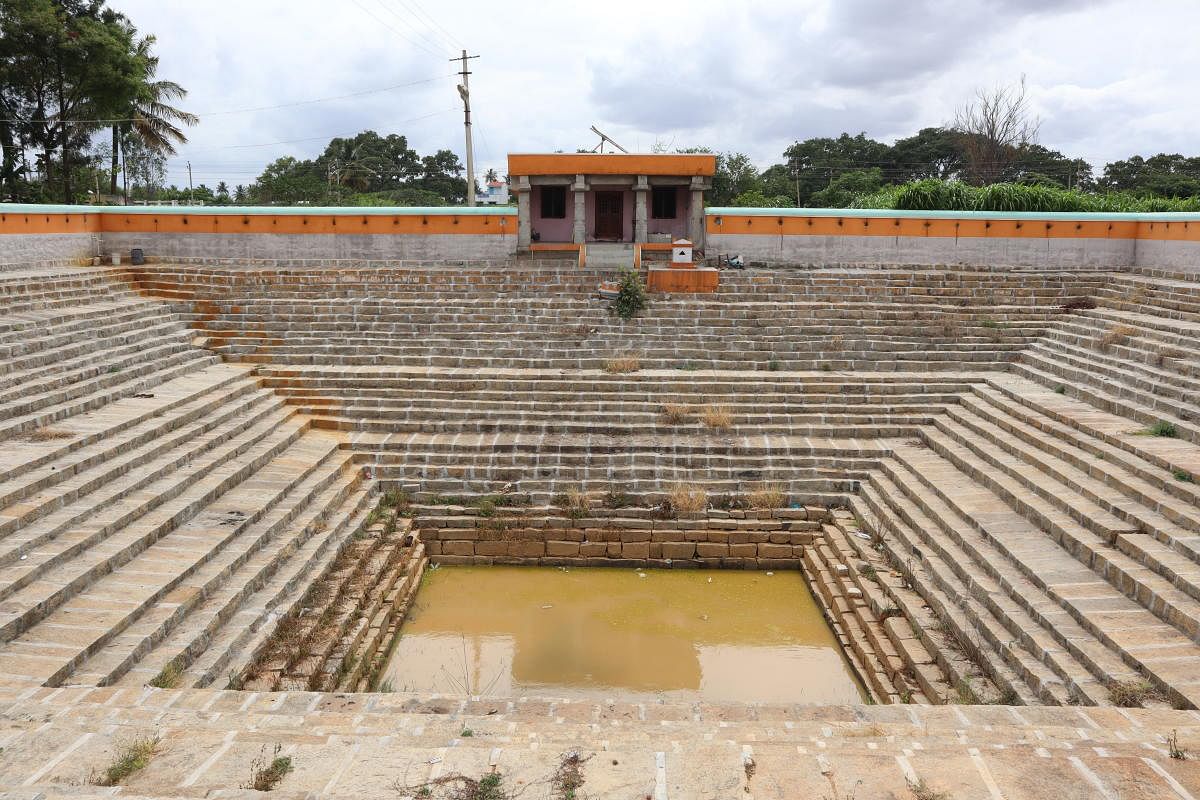
The Indian National Trust for Art and Cultural Heritage has taken up documentation of the last of the kalyanis (stepwells) in Bengaluru.
Many kalyanis have become sites for dumping debris and garbage.
While most stand-alone kalyanis have disappeared, some inside temple complexes remain, but their maintenance is far from satisfactory.
Meera Iyer, writer, researcher and convenor of Intach Bengaluru, says kalyanis not only played an important role in religious rituals but were also reliable sources of water.
“Almost all the kalyanis we have documented so far---except the modern ones at the Sankey, Ulsoor and Yediyur lakes---are attached to temples. It is not always easy to say whether the kalyani is attached to the temple or the temple is attached to the kalyani,” she says.
Intach is keen to document these traditional stepwells and help the government restore and preserve them.
“We have spoken to various people about the restoration of sluice gates at the Kempambudi lake. They are architecturally elegant and historically important,” says Meera.
Kalyanis in Siddapura, Bettadasapura, and Madiwala await documentation.
“We can restore the architecture but restoring the water may not be so easy. In some cases, construction has cut off the aquifers that fed the kalyani,” she says.
Swathy Subramanian, heritage conservation architect, has helped document three kalyanis---one each at the Chikkajala and Devanahalli forts, and another at the Anjaneya Swamy temple in Devanahalli.
The one amid the Chikkajala fort ruins is the most fascinating. It is surrounded by mantapa-like structures and fortifications, providing insights into past planning and settlement patterns and bearing a striking resemblance to elements of the Vijayanagara architectural style, she says.
A temple dedicated to god Anjaneya lies on the eastern side. “The perimeter walls show motifs of snakes, Shivalinga and Anjaneyas, possibly protective motifs. There are also motifs of monkeys, parrots, fish, and flowers on the steps. This kalyani has been left unprotected,” she says.
The kalyani inside the Devanahalli fort is made of brick and mortar. A low retaining wall surrounds it, and the steps have niches to hold lamps. It is currently in a decrepit and unused state, she says.
The kalyani at the Anjaneya temple in Devanahalli is used for cultural activities and plays a significant role during the annual Lakshadeepotsava (lamp festival) and Hanuman Jayanti.
Suresh Moona, who writes on Bengaluru history, says kalyanis were earlier found in places that had perennial springs.
“If we revive and maintain them we will be able to overcome any water crisis. But indiscriminate borewell digging and encroachment have rendered kalyanis useless,” he says.
He suggests kalyanis be transformed into performance spaces. “They are architecturally rich and the sculptures are beautiful,” he says.
Chakravarthy Sulibele, mentor of Yuva Brigade, says his group has revived more than 250 kalyanis across Karnataka.
“We have revived about 15 kalyanis in and around Bengaluru. Kalyanis attached to temples are always at the risk of turning into dump yards. Shops operate around the kalyanis and they throw waste and clog them up. We tried to save a kalyani in Begur from encroachment. We lost the kalyani to a government road,” he says.
Political parties are the same when it comes to grabbing kalyanis, he observes.
“Kalyanis are filled with stone and debris before they are encroached upon,” he told Metrolife.
Leo Saldanha, coordinator, Environment Support Group, says kalyanis are ceremonial water tanks that date back to pre-Vedic Harappan times.
“They had a pride of place in hundreds of Harappan cities, as is evident from excavations in the past century. They were kept in pristine cleanliness, not merely because they were ceremonially sacred, but also because they were drinking water reservoirs,” he explains.
Pandemic slowed down work
Rohini Sindhuri, commissioner of Hindu Religious and Charitable Endowments, says the government is trying to restore kalyanis in Bengaluru. “We had directed temple committees to start work, but many temples closed down during the pandemic and this slowed down work,” she says.
Across Karnataka
About 600 kalyanis have been revived, thanks to the efforts of the rural development department. L K Atheeq, principal secretary, says rejuvenation of traditional water bodies is a priority. “This initiative is a part of the Mahatma Gandhi National Rural Employment Guarantee Act, under which we look for measures to overcome water shortage,” explains Atheeq.